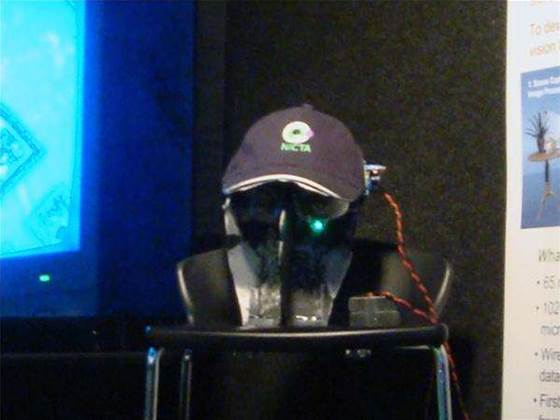Bionic Vision Australia has taken delivery of a prototype microchip that would power a “bionic eye” implant intended to restore partial vision to the blind.

The five-square-millimetre chip was designed to be implanted in a patient’s eye, communicating wirelessly with an external camera and stimulating retinal cells to elicit vision.
Bionic Vision Australia announced on Friday that the chip – manufactured via the 65nm CMOS process in the US – was performing well in preliminary lab testing.
A system demonstrated by consortium member NICTA in February featured a wearable webcam that transmitted information to the implanted chip via a 402 to 405 MHz wireless link.
The chip featured 1024 electrodes to decode images using object and facial recognition algorithms from NICTA.
NICTA researchers also intended the implant to feature electromagnetic coils that would detect eye movement and adjust the camera accordingly.
The consortium also comprised the Bionic Ear Institute, Centre for Eye Research Australia, the University of Melbourne and the University of NSW.
It had $42 million in Federal Government funding and targeted people with age-related vision loss and retinitis pigmentosa, in whom neural connections between the retina and brain could still be used.
Researchers planned to perform the first full implant of the system in a patient in 2013.


.png&h=140&w=231&c=1&s=0)
_(20).jpg&h=140&w=231&c=1&s=0)

_(22).jpg&h=140&w=231&c=1&s=0)



_(26).jpg&w=100&c=1&s=0)

 iTnews Executive Retreat - Security Leaders Edition
iTnews Executive Retreat - Security Leaders Edition











_(1).jpg&h=140&w=231&c=1&s=0)



